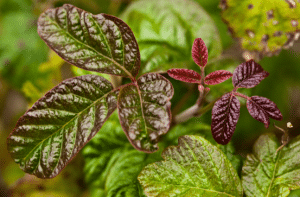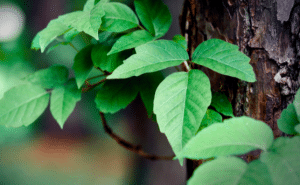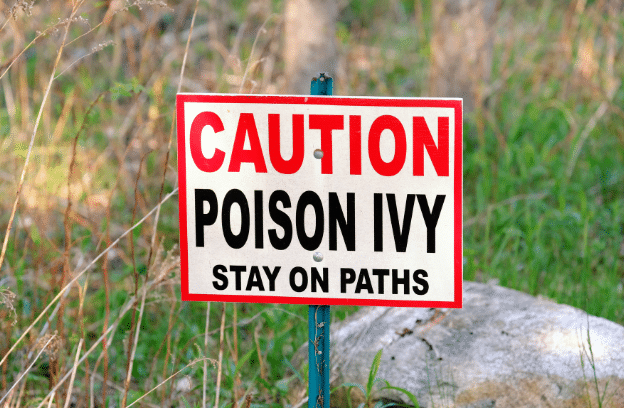Spring is synonymous with gardening. It’s a great time to get your yard in order, clear out old brush and plant new things. Unfortunately, these activities also increase your chances of exposure to poison ivy, poison oak or poison sumac.

All three plants contain an irritating oil called urushiol (you-ROO-shee-all), that when brushed against the skin, can cause an itchy, red, blistering allergic rash within 1 to 5 days. By taking a few precautions, you can minimize your chances of exposure.
- Learn to recognize problem plants. Poison ivy and poison oak have a “leaves of three” pattern. Poison ivy is a vine; oak and sumac grow as a shrubs. Herbicides are available to kill these plants in your yard, however, the oil can still be potent in dead plants.
- Wear a long-sleeved shirt, pants, socks, closed shoes and gloves when working in the yard, hiking, camping or hunting – any activity in wooded, brushy areas where these plants thrive.
- Consider applying an over-the-counter ivy block barrier containing bentoquatam under clothes for extra protection. These products help to reduce the skin’s absorption of urushiol.
- Get rid of the oil. Since urushiol can be transferred to the skin from other objects and remain active for years, immediately rinse, then wash garden tools, sports equipment, outdoor gear, clothes and even your pet’s fur and leash with warm, soapy water after possible exposure. Rubbing alcohol can also be used as an initial rinse/wipe, but avoid eye area.
- Don’t burn brush that may contain these plants. Urushiol can become airborne and cause serious eye, nose, throat and lung reactions.

If you know you’ve been exposed and develop a rash, you can treat mild symptoms at home:
- Wash affected areas as described above to eliminate any remaining oil that could transfer to other areas or to other people.
- Avoid scratching. This spreads the oil and increases the risk of bacterial infection. Leave blisters intact.
- Apply cool, moist compresses several times daily.
- Take cool showers or soak in lukewarm baths containing a colloidal oatmeal preparation (Aveeno). You can purchase this soothing product inexpensively at most drug stores.
- Apply Calamine lotion or 1% hydrocortisone cream to affected areas.
- Consider taking an oral antihistamine such as Benedryl or Zyrtec to reduce itching. Avoid antihistamine products applied to the skin as they can make symptoms worse.

If your symptoms don’t improve, get worse, or the rash affects your face, genitals or covers a large area, seek medical treatment. At any of our four (4) Physician’s Express Care locations, we routinely treat rashes and can prescribe appropriate medications to speed healing.
If you have a severe reaction, such as difficulty breathing or swallowing, call 911 or go to the nearest emergency room immediately.

